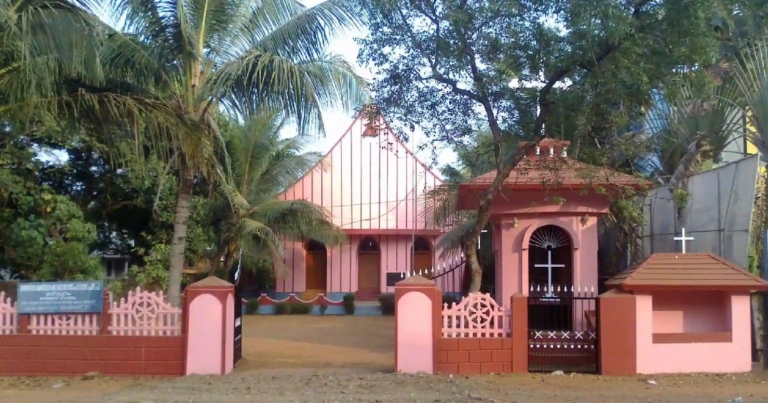Codacal, also spelled as Kodakkal is a historic place situated on the northern bank of Bharathappuzha or Nila river in Tirunavaya panchayath of Malappuram district, Kerala. Codacal lies on Kuttippuram – Tirur road and this road splits into two at Codacal town, one leads to Alathiyur, other to BP Angadi, both of which are suburbs of Tirur town. Tirunavaya is the nearest railway station and Tirur is the nearest major railway station.
Codacal is a beautiful picturesque village with lush green paddy fields and charming lotus fields with migratory birds. It lies on the northern bank of Bharathappuzha, second longest river in Kerala.
Codacal is a historic town where famous a duodecennial trade festival called “Mamankam” that took place on the northern bank of Bharathappuzha under the patronage of Chera, Valluvanad and Samoothiri of Kozhikode in different periods. Mamankam was one of the largest trade, cultural and religious festivals in India. Mamankam was held on every twelve years as analogous to “Kumbh Mela” in north India. Dry riverbed of Bharathappuzha near Navamukunda temple was the site of Mamankam. Most of the archeological monuments related to Mamamkam are located in and around Codacal. Manikinar, Nilapaduthara, Marunnara and Changampalli Kalari are major Mamankam monuments which are preserved in and around Codacal.
Demography
Codacal is a Muslim majority village and there are a substantial amount of Hindu and Christian communities live here. Codacal is a rare place in western part of Malappuram where Christian communities exist more than 150 years. Codacal region was a dense “Njangana” forest or a kind of cane grass and a group of Nadodis or nomads were wandering through this forest.
Codacal Christian Community
Codacal is one of the rare regions in Malabar where non – immigrant Christians exist. Most of the Christian communities in Malabar have their roots in Central Travencore area. Swiss – German missionary J.M Fritz visited Codacal in 1842. It was a turning point in the history of Codacal. After the last Mamankam which held in AD 1755, Codacal and neighboring areas lost its importance. With arrival of Basel missionaries, social and economic life of Codacal has changed. Missionaries established school and enrolled students irrespective of religion and caste. Girls were allowed in school while even upper caste women were banned education in those days.
Industrial Boom
Basel mission under the banner of The Commonwealth Trust established a tile factory in Codacal in 1887. It was mainly constructed to support newly converted Christians for their livelihood. After the conversion to Christianity, most of them were excluded from their own communities. Even before establishing a tile factory, Basel mission constructed a weaving factory to accommodate new converts. Several people from Codacal area were employed in tile factory. Tiles were on high demand in those time. Most of the houses in the end of nineteenth century and in the beginning of twentieth century had roots with palm and coconut leaves. A rapid transformation to the houses with tile roof took place after the arrival of tile factory. Tiles were exported to outside of the Malabar and even outside of India including Sri Lanka and Myanmar.Even in the areas of Tirur and Tanur, tile roofing houses appeared only after launch of Codacal Tile Factory. Namboothiri Manas and Illams were among first structures which are tiled.
Basel mission procured more than 600 acres of paddy fields for newly converted Christians in Codacal. Most of the converted were landless tenants or local nomad people. Veluthatt illam, Tavanur mana and Azhvancheri mana leased the land for 98 years.
Malabar Rebellion 1921
In the first phase of Malabar rebellion, Codacal was not affected very much. But after the suppression of riots, British Government started arresting of Mappilas irrespective of their participation in rebellion. Strong enforcement of Mopla outrages act and act of revenge against Mappilas forced them to hold sword and gun again. Mappilas in and around Codacal always suspected Christian community here as Government spies. A mob of Mappilas with more than 300 men started riots against Christian minorities in Codacal, burned houses and killed many innocents. A group of Muslims in Codacal gave shelter for their Christian brothers. Upon arrival of British forces from Tanur, Mappilas pulled back from the area. Quick arrival of British forces saved many lives with minimal civilian casualties and damages. After the incident many Christian minorities have fled to other districts like Kozhikode and Thrissur.


Add a Comment